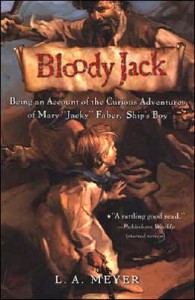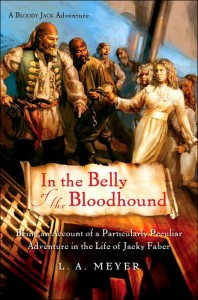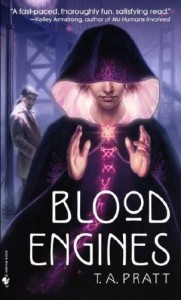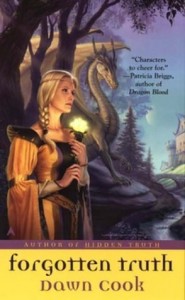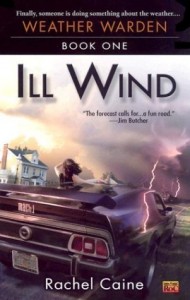After twelve years, hundreds of supplements, and dozens of fiction books, White Wolf Games decided to undertake a risky and unusual proposition: rather than update and revise their games, like they’d done twice before, they simply chose to end their popular World of Darkness series of games altogether, by publishing supplements containing end of the world scenarios for each of their game lines. In conjunction with this, they also released a trilogy of novels, one for each of the three major games, offering a canonical end to their universe. Billed as three separate acts in a larger story rather than a conventional story, The Time of Judgment trilogy answers some long-standing questions about the setting, and offers fans a glimpse into how things might just wrap up.
In Gehenna: The Final Night, a strange affliction sweeps through the ranks of the vampires which have preyed upon and dwelled among humanity for all of recorded time. As their supernatural abilities fade and their inhuman hungers grow, panic begins to grip the Kindred, both among the civilized sect known as the Camarilla, and the less restrained sect known as the Sabbat. As questions mount without ready answers, some vampires take this opportunity to settle old scores once and for all, while others quest for ancient secrets which might shed light on the situation. Night by night, the nocturnal society crumbles and collapses, the eldest vampires preying upon the young, blood flowing like water as they desperately try to slake their thirst.
Amidst the chaos, several players take the stage. For the researcher Beckett, this may be the best and last chance he has to figure out what purpose the Kindred serve. For the infamous Lucita, this will be a final reckoning with the dark forces she’s struggled with for centuries. And for the reclusive Kapaneus, it will be a time of discovery and redefinition, as he leaves his voluntary exile for the first time in many years. Why are the Kindred dying, and how does it all tie into the legendary Caine, first murderer and first vampire? The world will forever be changed by the passing of the Kindred, for they won’t go quietly into the final nights.
Though in some ways, Gehenna moves quickly, skipping over major events in the dissolution of Kindred society as it self-destructs, it still finds time to address long-standing concerns. This is, in many ways, the ultimate payoff for longtime fans, as many of Vampire’s “signature characters” appear for the last time, wrapping up old plotlines, settling grudges, and fighting off their inevitable ends . Faced with the conclusion of the long-running “metaplot” that has guided and linked dozens of supplements over the years, first-time novelist Ari Marmell spares no punches. Where many stories are about preventing the end of everything, Gehenna is about how the characters meet that ending. At times gory and action-packed, it also drops into moments of quiet introspection, giving the passing of the vampires a dignity amongst the desperation. Even if the answers it provides are somewhat vague, it’s still better than nothing. The game supplements offer several different scenarios for running Gehenna; the book takes elements from multiple scenarios in what’s probably the best compromise. Like it or not, this is the “official” end of the story, as far as the fiction line is concerned.
In a similar vein, The Last Battle brings the shapeshifters known as the Garou to their long-feared Apocalypse. Charged since the dawn of time with protecting the Earth spirit known as Gaia from the corrupting influence of the primal, insane Wyrm and its misshapen servants, the werewolves are a dying race, split into quarreling tribes and challenged by enemies on all sides, even within. King Albrecht, North American ruler of the Silver Fang tribe, spends his energies trying to form an alliance; when he and his entourage go missing after one diplomatic mission, several other influential leaders band together in a desperate, possibly disastrous union that will take their people to a war they cannot win. Meanwhile, Evan Heals-The-Past, charged with righting an ancient wrong, must rally a disparate group of untried Garou from different packs and tribes to combat a newly-free evil. The Egyptian werewolf known as Mephi Faster-Than-Death will be called upon to outrace death one last time, and in doing so, he may free his own tribe from an ancient curse. Meanwhile, the fallen Garou called Zhyzhak walks the evil Labyrinth one last time, an act which could free the Wyrm and bring about the death of everything on Earth. The Garou have always known that they’d likely fall in battle to fulfill their duties to Gaia; now that time has come and there’s no turning back.
Author Bill Bridges has written other books in the Werewolf line of fiction, so for him, this is both familiar territory, and a swan song. He too is given free rein to wrap up dangling plotlines, and to give the Garou a fitting sendoff. As is to be expected in a book titled The Last Battle, the body count is high and no one is safe. The battle rages on Earth, on the spiritual plane known as the Umbra, and in the heavens, as the planets themselves stir to life. Bridges does an excellent job of balancing the somewhat incongruous sides of Werewolf, the combat aspect and the spiritual aspect, and ascribing a certain fatalistic poignancy to the culmination of years of plotting. Again, this isn’t about averting the Apocalypse, it’s about meeting it head-on with dignity and pride. The ending is open to interpretation, with more than a few things left unexplained; probably all for the best, since even at this late point, the story benefits from a touch of inexplicable and ambiguous mystery. What matters is that the Werewolf story has a proper closure, one the fans can accept or not as they choose.
The trilogy, and the universe itself, are wrapped up in Bruce Baugh’s Judgment Day, which focuses upon the Mage game line. Where Gehenna was about questing for answers while the world fell apart, and The Last Battle was about the conflict brought about by the Apocalypse, Judgment Day is nothing less than the unmaking of all creation. As the universe winds down, all other problems and mysteries are placed into perspective. Unknown forces have selected three special people, all capable of manipulating the world around them in what some call magic. William, a paraplegic enhanced by advanced science. Robert, a modern-day urban shaman. Ming Xian, a Chinese mage hunted by her order’s long-time enemies. Individually, they represent three very different belief systems in the Mage setting. Normally, they’d never even have met; if they had, they might never have gotten along. It’s only now, when the world is unraveling and the laws of time and space no longer seem to apply, that they’re forced to associate. But why them? Who or what has chosen them, and for what role? Their separate and united quests will take them into the realm of the dead, to a Mars dominated by a crumbling citadel and haunted by legendary mages, to the ends of the Earth, and finally into the great unknown.
Written from alternating first person, present tense, points of view, Judgment Day isn’t the easiest story to follow. It’s interesting that for the very last Mage book (not that there have been all that many, especially compared to, say, the Vampire fiction line), Baugh chose to tell the story through these particular characters. Robert is hardly a major player in the Mage metaplot, and not what I’d have called representative of the Nine Traditions, which form the bulk of player-identifiable characters. William, though much more representative of the opposing Technocracy, is actually a lot more likable than one usual expects of the faction traditionally painted as the bad guys. And as for Ming Xian, she belongs to what I’d consider a rather minor group, one that even long-time Mage fans might be hard-pressed to describe. Virtually no mention is given of the insane Marauders or corrupt Nephandi, both of which have played large parts in the Mage metaplot over the years. Baugh’s story is ambitious and audacious for its choices.
The world is coming apart at the seams, and we’re often treated to three different, yet similar, experiences as the three characters follow their separate paths. But does it work? Yeah, it works. Mage has always been a more introspective, more inventive, more philosophical game than either of its two companions, and right to the last, it explores a deeper metaphysical territory. Even as the last page is turned, it opens up new questions, and the hope for another, better world to come.
I’m hesitant to recommend the Time of Judgment trilogy to newcomers. It’s steeped in twelve years of game supplements and fiction, after all. Even trying to explain the basics can be an exercise in frustration. Each book within the trilogy is self-contained; you don’t need to read all three unless you really want. Each builds upon the previous, and they all build upon what has come before them in the World of Darkness, but they hold up well to external scrutiny. In the end, all you need to know is this: the vampires, who have been around since Caine killed Abel, are dying out; the werewolves, who fight the minions of a primal force gone mad, must come together for one last battle; the mages, who manipulate reality itself are drawn together as reality finally comes unglued. The universe is rebooting, and it’s time for all stories to come to a close.
I have to salute White Wolf for taking this step, for daring to go out on a relatively high note. While these books won’t please all the fans, they certainly give it their best shot. I was pleasantly surprised at how strong these books were, both individually, and as a whole.
Originally posted on SF Site, 2004
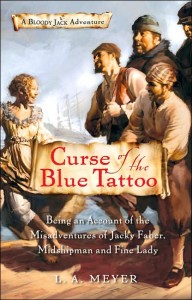 After her grand adventures aboard HMS Dolphin came to an ignominious end following the discovery that ship’s boy (later midshipman) Jacky Faber was, in fact, a fifteen-year-old girl, the spirited heroine of the Bloody Jack series embarks upon a new career: schoolgirl. At the exclusive (and strict) Lawson Peabody School for Girls in Boston, Jacky has to learn how to become a lady … something she’s most ill-prepared to handle. She’s been an orphan and a sailor, and has even killed men in the heat of battle, but that all pales next to the casual cruelty of teenage girls in a place so far away from home.
After her grand adventures aboard HMS Dolphin came to an ignominious end following the discovery that ship’s boy (later midshipman) Jacky Faber was, in fact, a fifteen-year-old girl, the spirited heroine of the Bloody Jack series embarks upon a new career: schoolgirl. At the exclusive (and strict) Lawson Peabody School for Girls in Boston, Jacky has to learn how to become a lady … something she’s most ill-prepared to handle. She’s been an orphan and a sailor, and has even killed men in the heat of battle, but that all pales next to the casual cruelty of teenage girls in a place so far away from home.

